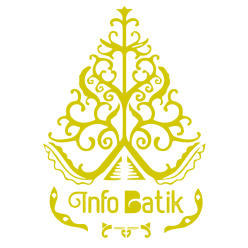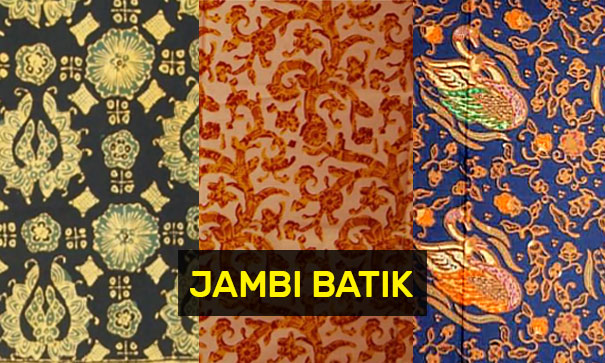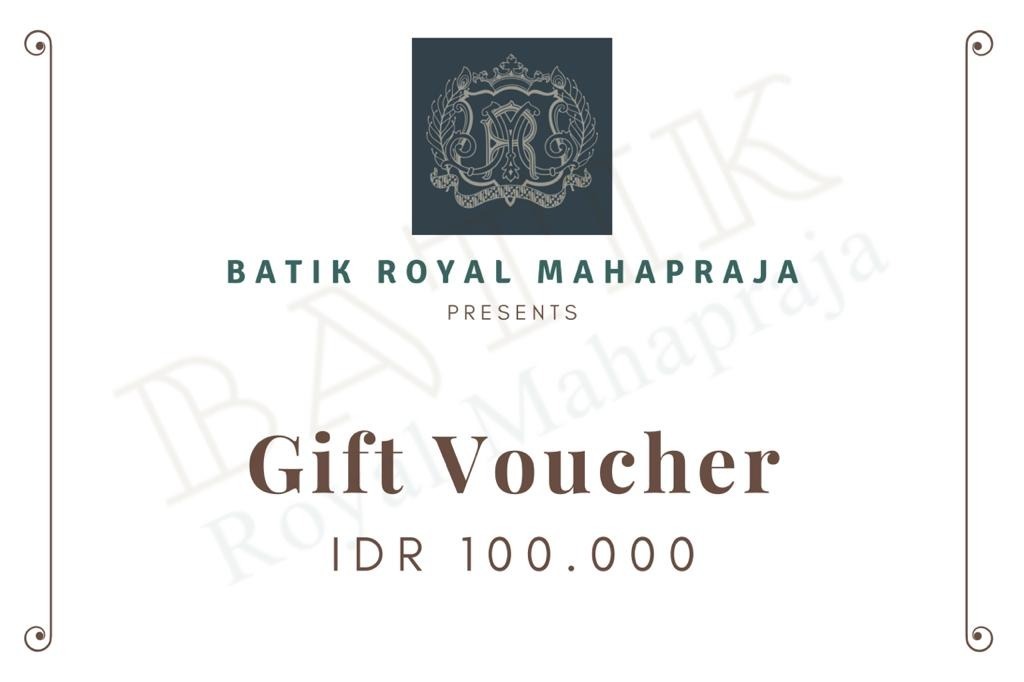Talking about batik will never end. This time we will discuss one of the batik outside Java which has a variety of motifs that are rarely heard, but are rich in cultural values. Basically, batik Jambi contains a lot of natural beauty which is reflected in the flora and fauna motifs. The first time batik in Jambi was discovered by Tasilo Adam in 1928 who was then assisted by Mr. Ezarman, a Malay nobleman. Jambi batik is believed to have developed since the time of our ancestors in Central Village, which is located on the River Sebrak, Jambi City. Nian S. Djoemana in 1986 told that Jambi Batik was also developed by Malay kings. They participated in pioneering it by wearing it in the palace, both for daily wear and for big events. In the modern era of the 1980s, Ir. Sri Soedewi Maschun Sofwan (the then Governor of Jambi) together with Mrs. Lyli Abdurrahman Sayoeti became the pioneers of modern era Jambi batik, by bringing in written batik experts from Yogyakarta. From there they gathered many people to learn batik. The batik technique taught is written batik with two coloring methods. The first is natural coloring, and the second is synthetic coloring. However, until now, the most popular technique used by Jambi batik craftsmen is the synthetic coloring technique.
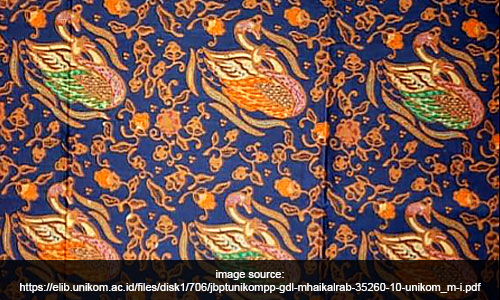
There are several types of famous Jambi batik motifs, including the Angso Duo motif. The Angso duo motif is depicted with two geese facing each other or side by side in several other motif modifications. This motif implies that everyone should always try to find a better place. Humans on earth are also invited to always be in tune and be in harmony with each other. Another meaning is that humans are also taught to be persistent and patient in trying.
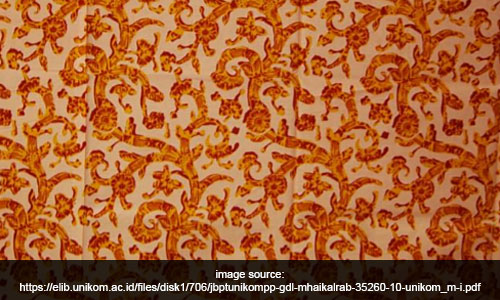
The second motif is the Batanghari Batik Motif. This motif is depicted in various details such as mountains, flowing rivers, flora and fauna. The name Batanghari is taken from the name of the main river in Jambi and one of the longest rivers on the island of Sumatra. The Batanghari motif is in the form of plant tendrils that stretch from the bottom up, inspired by the indentation of the Batanghari river itself. The Batanghari motif means a person’s life journey which is full of twists and turns, such as the indentation of the Batanghari river. There are also those who say that we are taught to never give up, when faced with a problem that is full of twists and turns, keep looking for a way out to solve it downstream of the river.
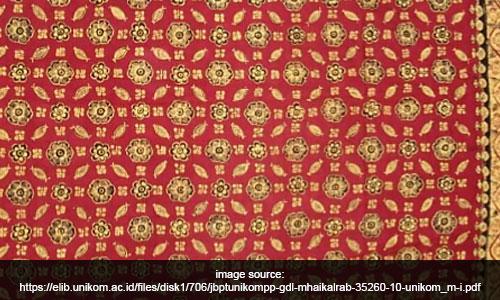
The third famous motif in Jambi is the Bungo Kaco Piring motif. At first glance, Javanese batik is similar to several motifs that look the same as the Kawung motif or the Madubronto motif. This is illustrated by its symmetrical and typical (repetitive) motifs. The name Kaco Piring is taken from a branched orange flower motif, and there was an error when pulling the canting so it formed a plate glass flower (Gardenia Jasminoides). The meaning of this motif is that humans are taught to always be strong in living life and describe a clean heart. The fourth motive is the Bungo Jasmine motif. The jasmine flower in Jambi is illustrated to be more fragrant than the jasmine flower in other areas. At first glance, this motif has similarities to the Javanese batik motif, namely the Truntum motif, where this motif contains small flowers that are repeated on one piece of cloth. The message contained in this motif is that humans do not need to have jealousy, always be full of gratitude, and other meanings symbolize that people do not impose their will on others and do not need to be arrogant.
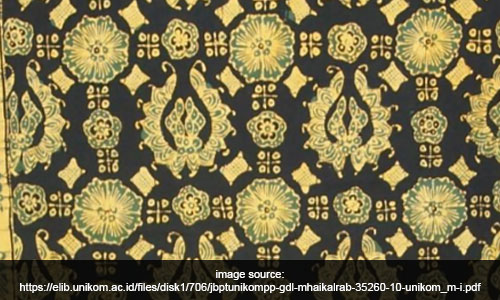
The fifth motif that is also famous is the Durian Pecah motif. This motif, as the name implies, is described as the durian fruit that is split or split in two. This motif is also a motif similar to the ceplokan motif in Javanese batik. The motives are also recurring and typical. In addition to the durian fruit image, other ornaments that fill this motif are resam decorations, fern leaves, kale flowers. Durian Pecah means that durian is a special fruit for Jambi people and Jambi customary people say “Nature floats to be a teacher” which means no matter how good it tastes, if it is damaged it is useless. And people are also taught to keep something so that it is not damaged. Another meaning that is contained is that a leader must be manah, firm in his speech and behavior, and also provide benefits to many people.
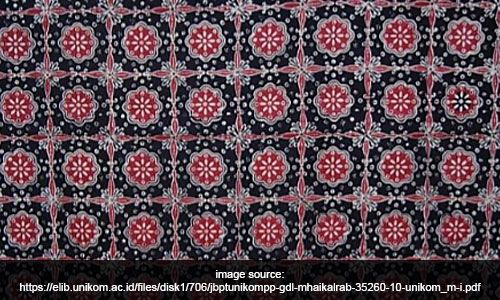
The sixth motif from Jambi which is famous is the Tampuk Manggis motif. The shape, which is also similar to Kawung Beton and Madubronto, is an interpretation of the mangosteen fruit that is often found in Jambi and neatly arranged on a piece of cloth. The number of ornamental accents outside and inside the cage on the motif must be the same, this illustrates the honest and open nature of Jambi people. The mangosteen rind is black but it is red inside and white for the color of the fruit, symbolizing that you don’t judge something just from the outside.

The sixth motif, known to many Jambi people, is the Sanggat Ship motif. The illustration of this motif is a small ship with a congruent pattern on a piece of cloth, which is also accompanied by several other objects such as sea animals (crabs, shrimps, fish, shells, etc.). Many messages are contained in the Senggat Ship motif. It is called the senggat ship, because senggat means aground in Malay. His interpretation is that this ship cannot continue its journey because it is stuck in something. The local customary message is “sailing to the island, walking to the destination”, is a warning to other people that doing something should not be half-hearted, it must be completed and finished. Another ornament motif contains sea animals around it which are rich in protein such as fish, crabs, etc. This indicates that every person, around him, there are many useful and kind friends who are sometimes forgotten while on the journey of life who also need attention. The last meaning, if seen from the motif, is that the mast is drawn upside down, not in line with the shape of the ship. This indicates that one must remain vigilant in doing something. Do not be negligent in carrying out tasks that can cause disaster in the future.
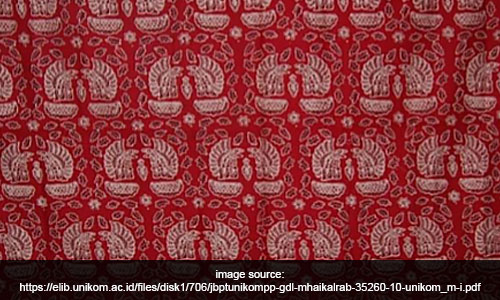
The last motif that will be discussed is the Kuao Berhias motif. Kuao is a bird or animal in the Argusianus species, of which there are two types, namely the Kuao Raja (Argusianus Argus) and the Double Striped Kuawo (Argusianus Bipunctatus). These two types of Kuao are native Indonesian poultry. Depicted on the cloth, Kuao’s motif is in the mirror while flapping its wings. It is reflected that Kuao is in the mirror so that there are two Kuao in one object plane. The message contained in this Kuao’s motive is for a person to always do self-introspection, to always evaluate himself what is his strengths and limitations. It is hoped that by always improving yourself, that person will become a better person in the future.
